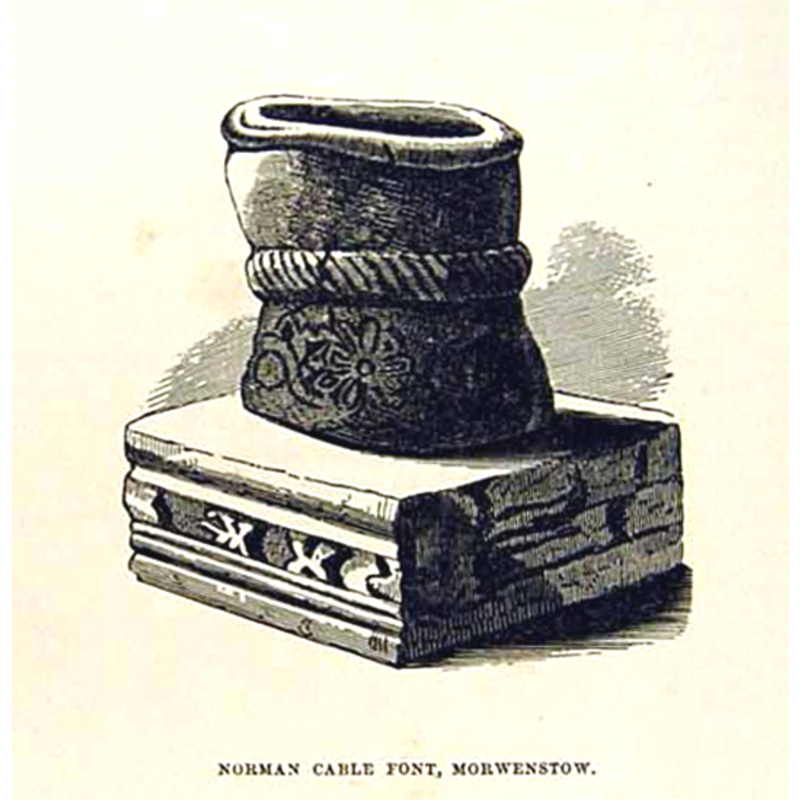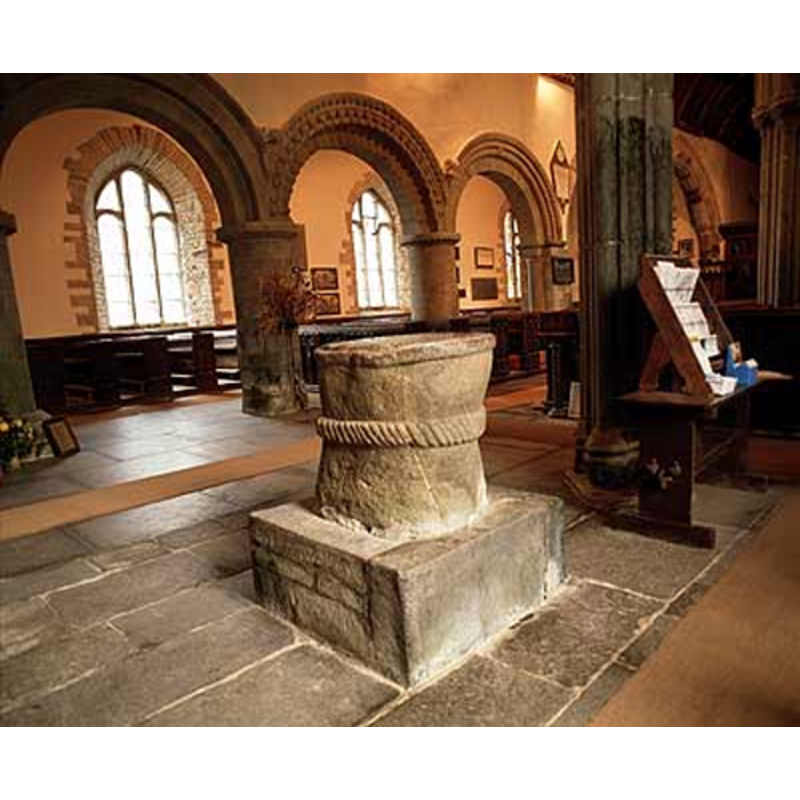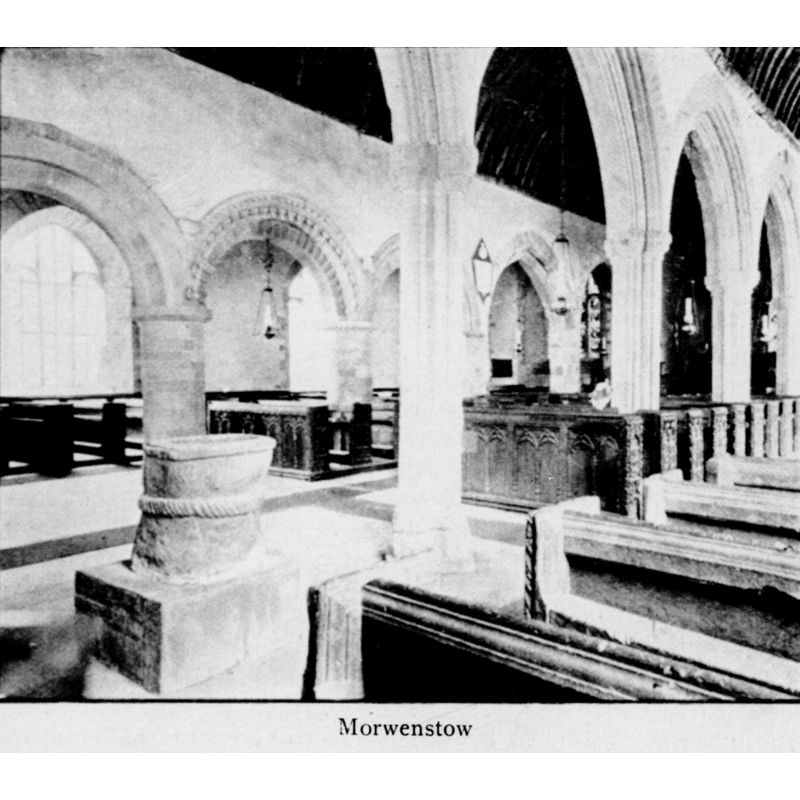Morwenstow

Image copyright © [in the public domain]
PD
Results: 7 records
CR01: design element - motifs - rope moulding
Scene Description: a thick rope moulding all around marks the division of the basin from the base
Copyright Statement: Image copyright © Atlantic Highway [www.atlantic-highway.co.uk], 2005
Image Source: digital photograph in Atlantic Highway [www.atlantic-highway.co.uk]
Copyright Instructions: CC-BY-SA-3.0
view of basin - interior
view of font
view of font
view of font in context
view of font in context
view of font in context
INFORMATION
FontID: 04457MOR
Object Type: Baptismal Font1
Church/Chapel: Parish Church of St. Morwenna and St. John the Baptist
Church Patron Saints: St. Morwenna & St. John the Baptist
Country Name: England
Location: Cornwall, South West
Directions to Site: Located in NE Cornwall, just inland from Higher Sharpnose Point, about 10 km N of Bude
Font Location in Church: In the centre of the nave, towards the east side
Century and Period: 11th - 12th century, Pre-Conquest? / Norman?
Cognate Fonts: Similar to the central shaft at the font in Lustleigh. The fonts at Chickerell, Eardisley, Morwenstow, South Milton and Bishop's Teignton, all have a cable moulding that appears to contract the shape of the vessel into a cup-shape. Boyton and Washaway have the same oval shape
Credit and Acknowledgements: We are grateful to Atlantic Highway [www.atlantic-highway.co.uk] for the recent image of this font.
Font Notes:
Click to view
Illustrated in Blight (1856) [Blight's illustration shows floral motifs below the rope moulding; we have not been able to find those in any other source thus far]. Described and illustrated in Bond (1908) as a baptismal ornamented with band of cable motif around its middle and "reputed to be Norman"; the font is llustrated in Bond standing on a square block, clearly not an original part of the font. Hutton (1957) describes this baptismal font as Norman or Saxon "with crude cable carving". Described in Cox (1912): "Rude circular font, with band of cable moulding round the centre is supposed by some to be Saxon, but more likely early Norm[an]." Noted in Pevsner (1970): "Font. Very primitive Norman, egg-shaped, with a simple calble moulding at the foot." Noted in Cautley (1982) as "certainly Saxon". Described in Jenkins (1999) as a Norman font, "among the oldest known, a tub font with cable decoration round its waist. The hollowed bowl is in the shape of an open hard-boiled egg".
MEDIUM AND MEASUREMENTS
Material: stone
Number of Pieces: one
Font Shape: tub-shaped
Basin Interior Shape: oval
Basin Exterior Shape: oval
REFERENCES
Betjeman, John, An American's Guide to English Parish Churches (including the Isle of Man), New York: McDowell, Obolensky, 1958
Blight, John Thomas, Ancient crosses and other antiquities in the east of Cornwall, London: Simpkin, Marshall & Co., 1858
Bond, Francis, Fonts and Font Covers, London: Waterstone, 1985 c1908
Cautley, Henry Munro, Suffolk churches and their treasures, Woodbridge: The Boydell Press, 1982
Clarke, Kate M., "The baptismal fonts of Devon -- Part IV", 48, Report and Transactions of the Devonshire Association for the Advancement of Science, Literature and Art, 1916, pp. 302-319; p. 45, 239
Cox, John Charles, Cornwall, London: George Allen & Company, 1912
Hutton, Graham, English Parish Churches, London: Thames & Hudson, 1976
Jenkins, Simon, England's Thousand Best Churches, London and New York: Allen Lane, the Penguin Press, 1999 [2000 rev. printing]
Mehling, Franz N., Great Britain and Ireland: a Phaidon Cultural Guide, Englewood Cliffs, NJ: Prentice-Hall, 1985
Pevsner, Nikolaus, Cornwall, Harmondsworth: Penguin Books, 1970
Tyrrell-Green, E., Baptismal Fonts Classified and Illustrated, London: Society for Promoting Christian Knowledge: The Macmillan Co., 1928


